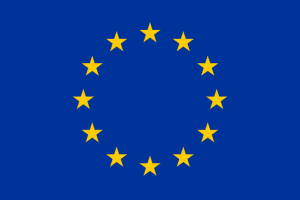Stargazing in Shebenik, where nature meets legends

In mid-August, Shebenik National Park in eastern Albania offers a stunning celestial show, with up to 100 shooting stars visible per hour on warm summer nights. This display, known as the Perseid meteor shower, occurs when Earth passes through the dense debris of Comet Swift-Tuttle. “As tiny particles enter the Earth's atmosphere, they burn up and leave bright trails across the sky. Shebenik’s remote location, free from light and air pollution, provides an excellent vantage point for this spectacular event”, explains local guide Lyto Alliu.

EU in Albania
To promote environmental awareness, healthy living, and showcase Albania’s protected areas, “Europe House” organized together with Alliu a visit which included exploration, hiking, camping, and stargazing at prime spots in the park. “Shebenik is noted on the Albanian Astronomical Map for its clear views of celestial objects, including the moon,” says Alliu. After exploring the Librazhd museum, Llanga village, and hiking 5 kilometers through the forest, visitors enjoyed the meteor shower by a fireplace in the cool summer night.
Flora and Fauna

EU in Albania
Fushë-Studen is situated about 1100m above sea level and is surrounded by mountains. The name of the field, Studen, means cold. Shebenik Park extends over 35,000 hectares across three municipalities: Librazhd, Bulqize, and Prrenjas. The park’s rich ecosystem includes 14 glacial lakes, 3 artificial lakes, and the UNESCO-protected Rrajca beech forests, which are over 300 years old. The park is home to around 1600 plant species, including nearly 80% of Albania's medicinal plants and rare endemics like the Albanian lily.

EU in Albania
"Its flora is very rich, mainly dominated by large forests with beech which have had no human intervention in three centuries. The park is home to around 1600 plant species, including nearly 80% of Albania's medicinal plants and rare endemics like the Albanian lily(Albanicum Lilium)", explains Xhek Nezha, from the Administration of Protected Areas of Elbasan (AKZM) while the group has arrived at the Visitors Centre in Fushe-Studen.
The European Union funded the restoration of the building. Through photographs and infographics, visitors are provided with information in Albanian and English on the main species of flora and fauna of the park.

EU in Albania
"The fauna is also rich. We have all the mammals of Albania, including the bear, the wolf, the roe deer, the wild goat, the rabbit and at the top of the pyramid is the Balkan lynx, a critically endangered species,” says Nezha. Trap cameras in the park have captured images of the Balkan lynx and other wildlife, demonstrating the park’s healthy ecosystem.

EU in Albania
During the tour, the specialists from AKZM showed how the trap cameras are installed to ensure footage from fauna. Photographing in a radius of 8 meters distance, camera’s sensors are activated when there are objects or species that have a certain heat. It was one these cameras that showed three Balkan Lynx, while another, shows a bear destroying the camera.
Culture and Legends

EU in Albania
Shebenik’s region blends cultural traditions from Rrajca, Stebleva, and Golloborda, a village where an old Bulgarian dialect is spoken. The visitors center highlights the local culture, biodiversity, and trails leading to lakes, peaks, and natural monuments. Legends such as the story of Alexander the Great’s father and Skanderbeg, Albania’s national hero, are woven into the park’s history.

EU in Albania
"One of the most famous battles of Skanderbeg is that of Torviol, a battle in the field of Domosdova, which is close from where we are. The legend is that when he passed this way, he broke a rock, and had lunch with his army to another rock. That's the explanation for two toponyms, The Stone of Skanderbeg and the Round Table of Skanderbeg, a rock 1 km long and 800 metres wide", says Lyto Alliu.
The Hermit Cave or Hermit's Church, near the river of Qarrishta, with 9th-12th century paintings of Saint Mary and disciples, is another intriguing site. "There were groups of pilgrims passing by, and as they didn't have where to pray, it is believed that they painted the cliff of the cave", explains Alliu.

EU in Albania
The region preserves traces of different eras, from Roman Empire with Via Egnatia to Ottoman Empire and Skanderbeg. Nowadays a lot of them are tourist attractions, but there are some others having a new function. As Shebenik Park is near the border with North Macedonia, during the communism, there were a lot of military stations controlling the border. Now most of them are used as shepherd huts during the summer when herders move into mountainous pastures. The practice is now smaller in numbers as it used to be, but is however a way of transmitting transhumance, which contributes to strengthen cultural identity and territories while counteracting the effects of rural depopulation as UNESCO estimates.
BACKGROUND INFORMATION

EU in Albania
“Strengthening national capacity in nature protection – preparation for Natura 2000 Network” is a project aiming to halt the loss of biodiversity in Albania, through improved management of protected areas and setting the basis for the future implementation of the European Natura 2000 network. Protected areas are the cornerstones of nature conservation and often the most reliable way to conserve the diversity of ecosystems. Its overall objective is prepare a preliminary list of Natura 2000 sites, in view of their future submission to the European Commission by the competent Albanian authorities, contributing to the alignment process of the country’s regulatory framework with the EU environmental acquis, develop and implement a comprehensive capacity building programme for protected areas staff and realization of specific actions concerning infrastructure, equipment, conservation of priority habitat and species, and biodiversity monitoring.





